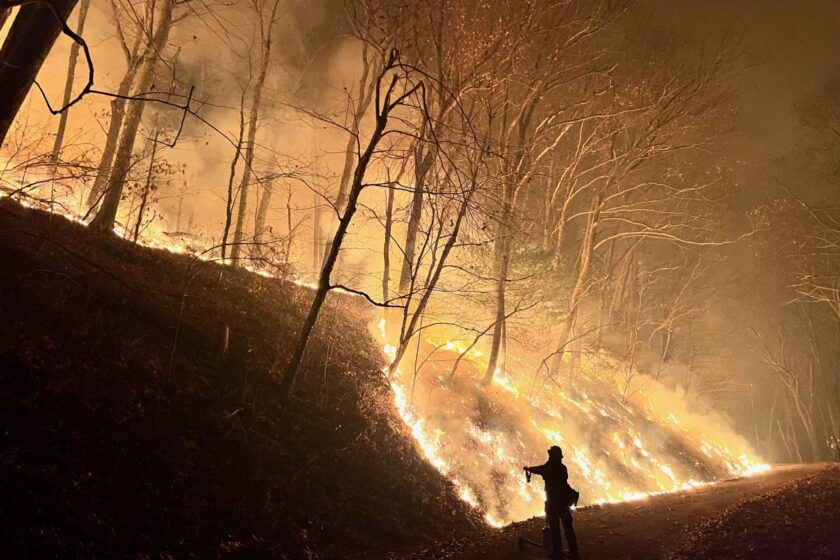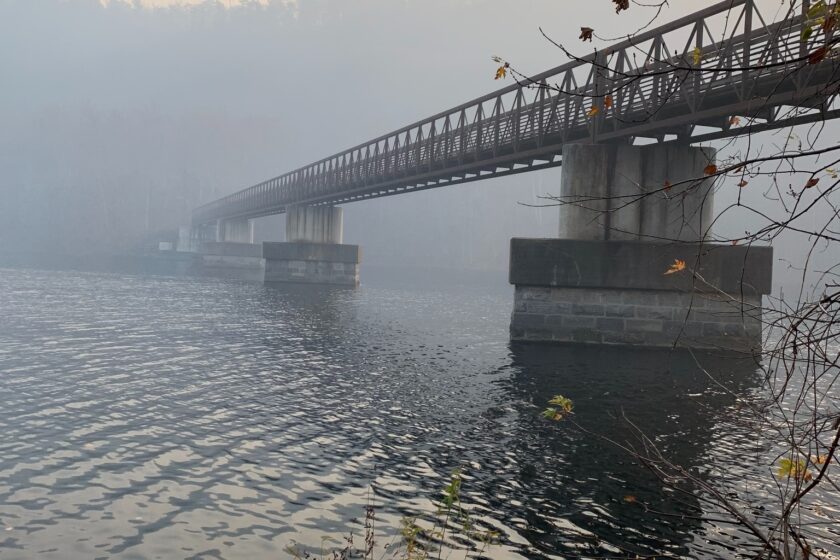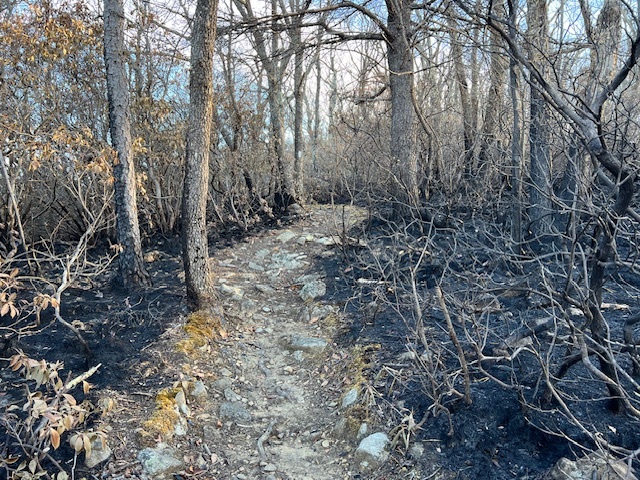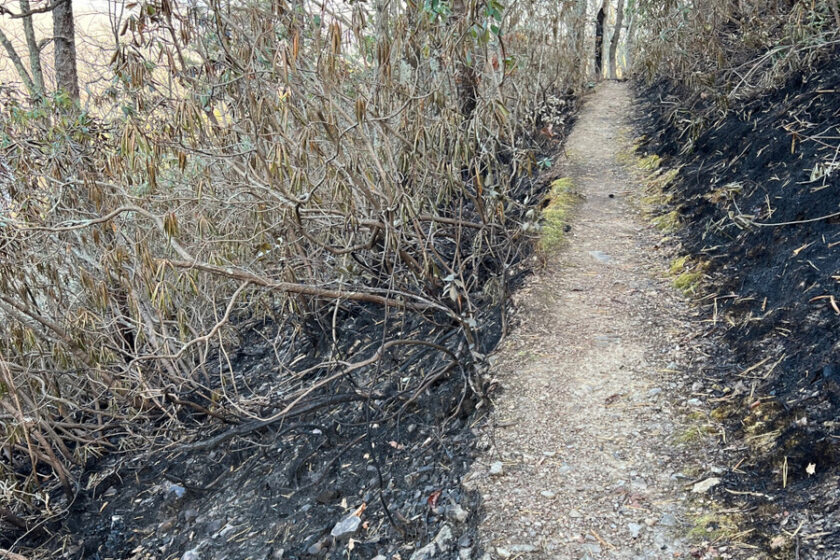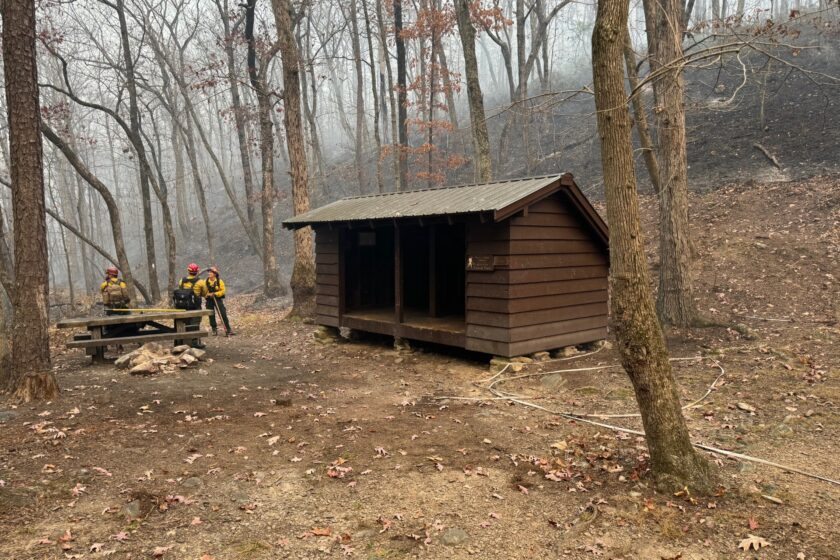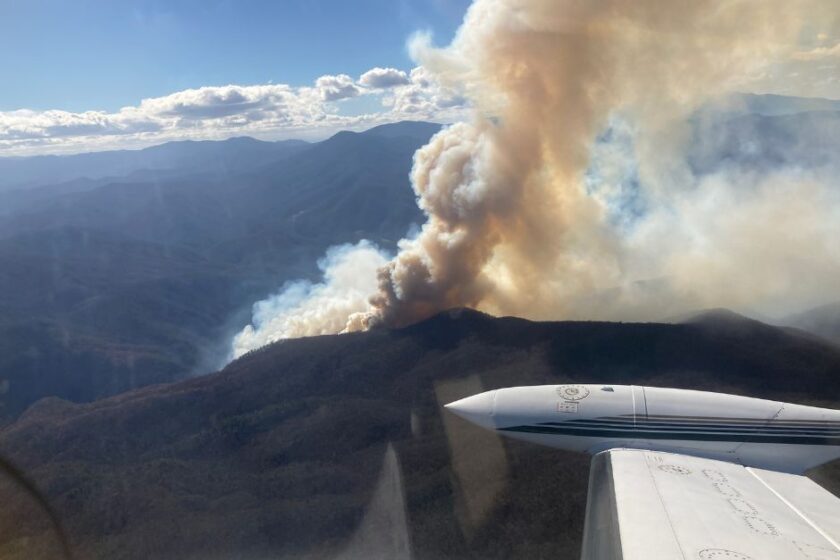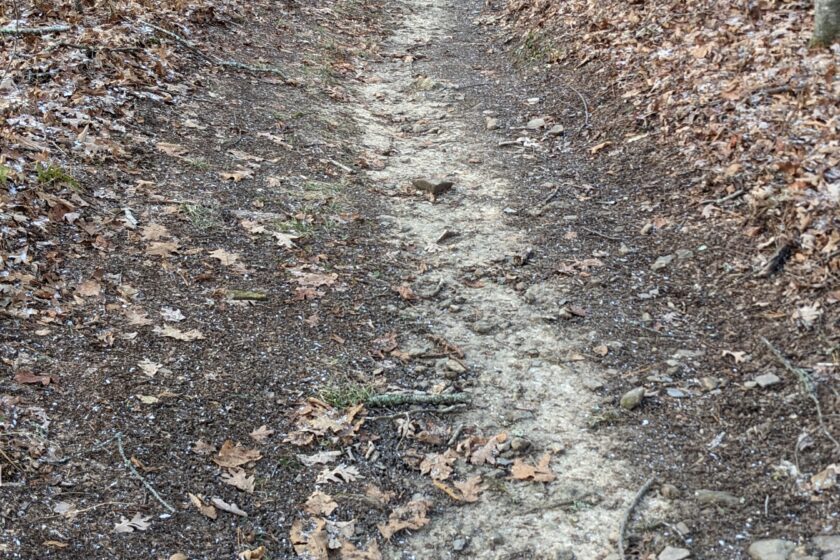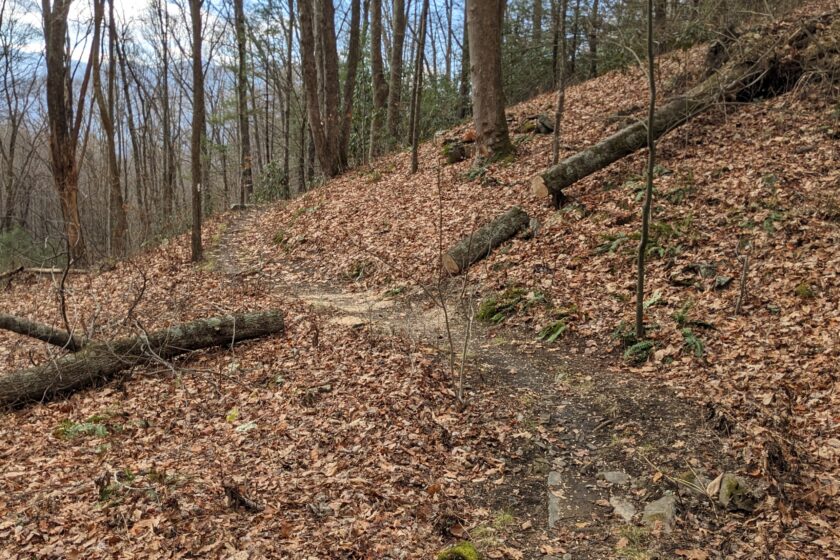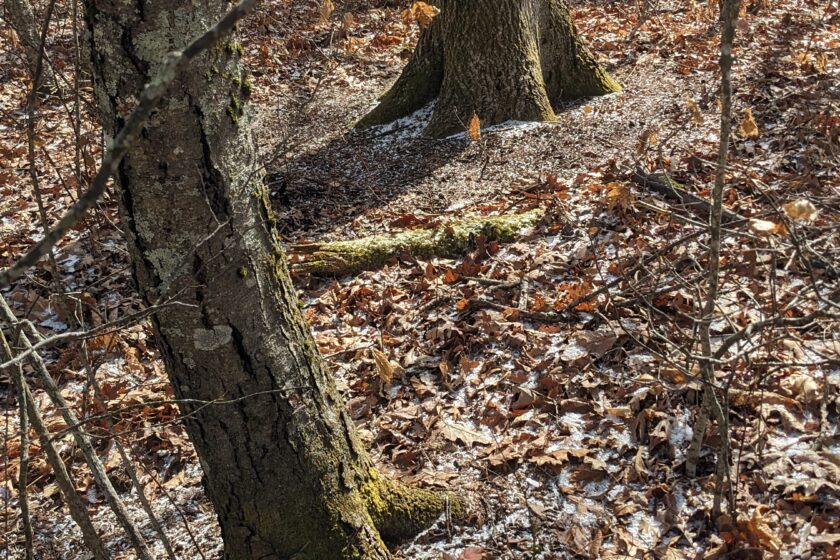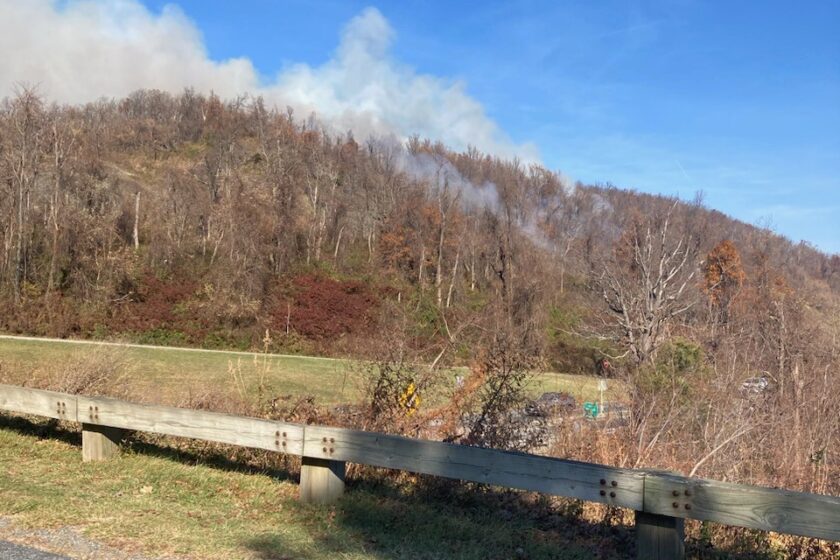by Caitlin Miller, ATC Information Services Manager
Climate Change and A.T. Maintenance, Part 2: Wildfires
2023 was a season of extremes on the Appalachian Trail (A.T.). As detailed in part one of this series, severe flooding along the northern section of the Trail waylaid hikers, damaged infrastructure, and caused some sections to temporarily close. While the Northeast saw too much water, the South saw not enough. Widespread drought, hotter-than-average temperatures, and high winds plagued the Trail and surrounding communities from Virginia to Georgia, and wildfires caused three temporary Trail closures.
Though El Niño likely contributed to the heightened fire conditions of the past year, multiple studies show that climate change is a primary driver behind the heightened fire weather and longer fire seasons across the U.S. According to the National Oceanic and Atmospheric Administration (NOAA), the Southeastern U.S. can expect more periods of hot, dry, and windy weather, lengthening the fire season, “increasing trends in wildfire numbers, the size of the events, total hectares burned, shifts in seasonality, and overall increases in the annual probability of large wildfires.”
Along with the obvious danger to hikers and surrounding communities, wildfires can bring erosion, infrastructure damage, and an increased number of hazard trees to the A.T. Longer periods of more severe fire conditions mean that Trail partners will likely have to spend more money and resources on firefighting and A.T. volunteers will have more work to do to rehabilitate burned areas in addition to the regular maintenance needs of the Trail.
However, the strong and active partnerships of the A.T.’s unique cooperative management system give us hope. Initial reports tell us that the Trail escaped major damage during the 2023 fire season thanks to the quick responses of land managing partners and Clubs.
2023: The Trail as a fire line
Matts Creek Fire, Virginia
The Matts Creek Fire in November in the James River Face Wilderness is one of the largest eastern fires in U.S. history with over 11,000 acres burned. The fire closed a 9.9-mile section of the Trail south of the James River Footbridge and, at the height of the fire, the smoke caused local schools to close. The Natural Bridge Appalachian Trail Club’s (NBATC) initial walk-through after the fire showed a more positive outlook than Club members had feared. John Phillips, past President of NBATC, shares that the Club is still in the “careful waiting and watching stage” to assess the full impacts of the fire come spring. John credits the following factors as contributing to the Club’s optimism:
- “The fire crews focused on protecting the A.T. and its associated structures,
- The forest service [reported that the fire was] confined mostly to the leaf litter,
- The initial maintainers’ walks through the fire area showed ground level fire with the large trees mostly intact.”
Black Bear Fire, North Carolina
A vehicle accident on I-40 just Trail-north of Davenport Gap sparked the Black Bear Fire, which quickly spread in dry conditions on the Pisgah and Cherokee National Forests. The A.T. was closed for almost a month from I-40 north to Brown Gap and the fire burned just over 2,000 acres.
Like the Matts Creek Fire, the quick response of both the U.S. Forest Service in containing the fire and the Carolina Mountain Club (CMC) in conducting an initial assessment afterward provide us with an optimistic outlook. Jon Larimer, CMC volunteer and co-maintainer for part of the section affected by the Black Bear Fire shares that using the Trail as a fire line – fire crews “clearing leaves and brush along the Trail, cutting down some standing dead wood…and removing a few blowdowns” – benefitted both fire containment efforts and maintainers.
Royal Orchard Fire, Virginia
Another vehicle accident on I-64 in November sparked dry undergrowth near Rockfish Gap and the Royal Orchard Fire quickly spread into Shenandoah National Park. The Trail was closed for a few days from Rockfish Gap to Jarman Gap. At the time of the Royal Orchard Fire, the Quaker Run Fire also burned in the park. The Trail itself was not affected by the Quaker Run Fire, but officials with Shenandoah National Park warned of poor air quality throughout the park during the height of the blaze, which burned almost 4,000 acres. Volunteers with the Potomac Appalachian Trail Club (PATC) were quick to get out and check on the Trail following the fire.
Not the first time wildfire has closed the Trail
2022 saw several shorter Trail closures caused by wildfires: two in Pennsylvania as dry weather swept through the region in the spring and a wildfire near Fontana Dam prompted ATC to send an ATCamp alert due to the safety concerns for the NOBO (northbound) thru-hiker bubble.
And many in the A.T. community remember the widespread wildfires of 2016. That fall, the U.S. Forest Service tracked dozens of wildfires across the Southeast, including the Trail states of Georgia, North Carolina, and Tennessee. While it did not reach the A.T., the tragic Gatlinburg fire that started in Great Smoky Mountains National Park quickly spread due to extreme drought conditions and burned 17,900 acres, destroyed over 2,000 buildings, and killed 14 people.
A fire-resilient A.T.
Preparation is just as important as how we respond to wildfire. As we head into the 2024 field season, partners are already planning prescribed burns, which help reduce the risk of extreme wildfires. A.T. partners, particularly the U.S. Forest Service, have been utilizing prescribed burns for years to safely burn duff and flammable undergrowth in a controlled setting. Prescribed burns have also been used to maintain open areas – grassy balds and fields that host important successional habitats for birds and other A.T. pollinators – and regenerate parts of the A.T. landscape. Each year, A.T. partners assist with prescribed burns along the Trail.
The dedication of A.T. volunteers time and again shines through the smoke and remains one of our best tools for responding to climate change on the Trail. The worst of the erosion caused by the Matts Creek Fire has been patched and volunteers in all three burned sections are making plans for spring walk-throughs to conduct more repair work, routine maintenance, and identify areas that need further assessment. By becoming an A.T. volunteer, you can help ensure the A.T. is prepared for increased fire risk so this treasured footpath remains a steady thread through our changing climate.
Discover More

Plan and Prepare
Trail Updates
Know before you go — be aware of the latest Appalachian Trail conditions, weather advisories, and reroutes/closures.

Official Blog
Preserving the “Oxygen” of the Trail
How Benton MacKaye’s call for protecting the “oxygen in the mountain air along the Appalachian skyline” guides our work in combating climate change on the A.T.

JOIN OUR EFFORTS
Ways to Volunteer
Volunteers are the heart and soul of the Appalachian Trail, and there are many opportunities for you to give back to the Trail you love so much.






